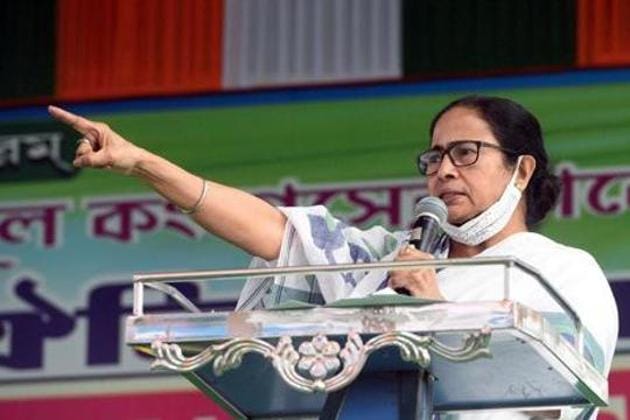How the TMC is fighting the BJP juggernaut in Bengal
The Trinamool Congress has made dramatic changes to its organisational power structure and launched two key mass outreach programmes
If you are a dispassionate political observer how do you make sense of the extreme claims made by Bengal’s two main players. The Union home minister, Amit Shah, has argued that the Bengal Bastion will fall to the Bharatiya Janata Party’s (BJP) conquering troops with a 200-seat victory and Prashant Kishor, strategist for the Trinamool Congress (TMC), has dramatically declared that he will quit his profession if the BJP is able to cross double digits in the 294-seat strong assembly.

For the BJP, the conversion of Bengal’s cultural Hindu into a political Hindu is a long-standing project. It has invested a vast scale of resources in building a grassroots apparatus — there are tens of thousands of Sangh volunteers across the state’s villages — and it has reason to draw confidence from its performance over just the last few years. In fact in the three years between the last assembly election in 2016 and the 2019 Lok Sabha elections, the party’s strength rose from six assembly segments to 121. While Mamata Banerjee held onto her base, there was a distinct move from Left-supporting voters to the BJP in this time, leading to many “Baam se Ram” memes.
To win Bengal, however, the BJP would have to significantly better these numbers. And it is here that the TMC is confident that its fortress will not crumble.
There are two things both sides agree on. First, that this will be a ferociously-contested election but with a one-sided outcome. In other words, Bengal will throw up a clear winner. The second is that the Bengal chief minister, Mamata Banerjee had, in the last elections, to borrow the words of an aide, “made the mistake of being complacent and dismissive about the BJP, both organisationally and individually.”
The TMC is determined to not make those mistakes again.
There are several reasons why Mamata Banerjee’s party believes it will prove to be the bulwark against the Modi juggernaut in the east. The first is what Kishor calls “the denominator effect.” Given that 30% of Bengal’s voters are Muslim, the TMC argues that the BJP is playing for only 70% of the voter base while the TMC is courting a larger base of 100%. In a bipolar contest, the BJP, thus needs a way higher strike rate than than the TMC, something like 65% of that 70% voter pool, to deliver a win. Yes, in 2017, the BJP did handsomely win Uttar Pradesh, another state with a sizable minority population. But this could be because of the triangular nature of the contest there where a nearly 40% vote share enabled a BJP win. That same percentage would not deliver Bengal to the BJP.
The TMC believes that the geographical spread of Bengal’s biggest districts will work to its advantage. Just like pan-India politics — six states account for 300 Lok Sabha seats — in Bengal, nine key districts account for 184 of the seats. Including 24 North Parganas, Hooghly, Nadia, Murshidabad, South 24 Parganas, Paschim Bardhaman, Paschim Medinipur, Purba Medinipur and Howrah, these are all areas where the TMC is still holding its own.
Personally, Banerjee remains entrenched and popular, even if her party’s local leadership is not. There may be no euphoria for her, but nor is there any pan-Bengal emotion to vote her out. The status-quo sentiment for her and the absence of a local face for the BJP is likely to go to the TMC’s advantage. Of course, she remains a brand in spite of her party and not because of it.
To contend with anger against the party, Kishor and his team have made dramatic organisational changes to the TMC power structure, Younger, 40-somethings such as Mahua Moitra, Partha Pratim Roy, Mausam Noor, have been placed in charge of key districts. Two key, mass outreach programmes — Didi Ke Bolo and Duare Sarkar (government at your doorstep) — are the core weapons of the TMC’s battle plan. Party leaders say 7.5 million phone calls from ordinary citizens have already been processed, with a team of 1,000 monitoring these daily. Fifteen million people have used the Duare Sarkar camps averaging several lakhs daily. The TMC believes that these, along with Pathashree Abhijan (a giant scheme to repair thousands of rural roads) will bolster even its weaker defences.
Of course, Banerjee has had to readapt and realign her positioning to the BJP’s assaults. Mindful of the tag of being anti-Hindu, an honorarium has been announced for all temple priests across the state.
The BJP’s trump card, as always, remains the Prime Minister. Expect a welding of the Modi factor with resurgent politics around the citizenship legislation in Bengal in the next few months.
Game on.
Barkha Dutt is an award-winning journalist and author
The views expressed are personal






